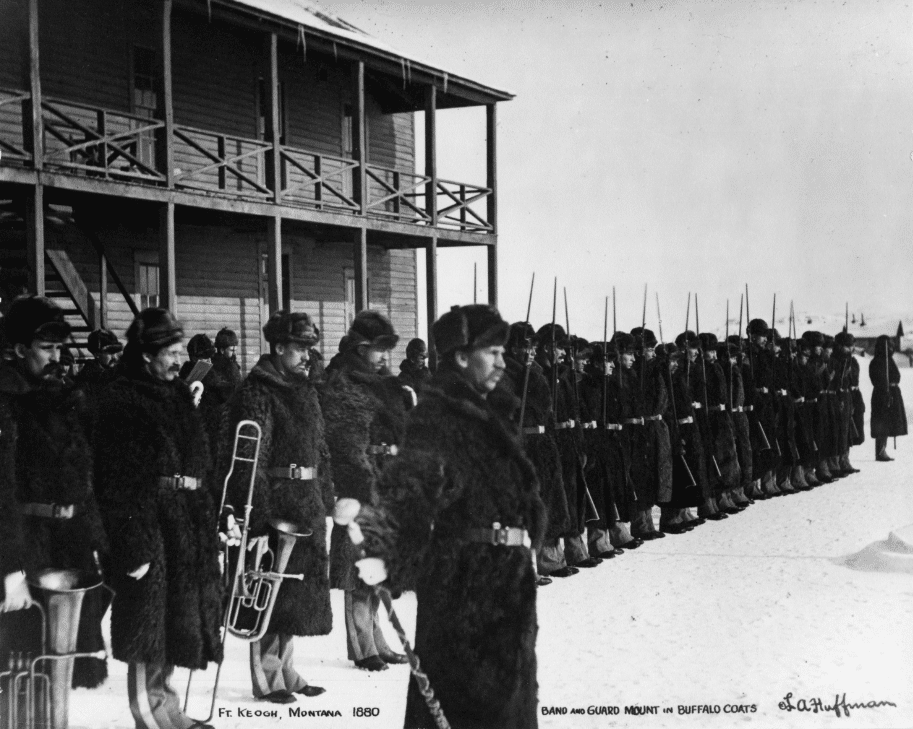From an army cavalry to one of the largest agricultural research stations in the country, the Fort Keogh Livestock and Range Research lab has played a significant role in the expansion of agricultural research in Montana. Located just outside of Miles City, the lab recently celebrated its 100th anniversary, but the history of Fort Keogh goes back even further.


General Nelson Miles established Fort Keogh as a military reservation in the late 1800s shortly after the Battle of the Little Bighorn. General Miles named the fort after Captain Myles Keogh, who served under General Custer during the battle. The post became a remount station for the military in 1909, processing more horses than any other remount station during World War I.
On April 15th, 1924, the War Department transferred it to the Department of Agriculture for agricultural research. In collaboration with Montana State University’s Agricultural Experiment Station, the Fort Keogh Livestock Research Lab began its earliest studies on animal genetics and range management.
Research has evolved significantly since 1924. Initially covering Shorthorn cattle, swine, turkeys, sheep, and horses, the focus shifted exclusively to beef cattle research in 1986, with an emphasis on genetics, reproductive physiology, and nutrition.
The mission of the facility is to develop sustainable range animal systems that meet consumers’ needs. Animal genetics is a major focus, aimed at improving the efficiency of livestock production and using rangeland strategies to produce high-value products.
Northern Ag Network’s Grace McDonald spoke with Jay Angerer, Research Leader at the Fort Keogh Lab, who has extensive knowledge not only of range ecology and livestock marketing but also of the station’s history.
Angerer said that one of the most notable aspects of the 55,000-acre facility at Fort Keogh is the herd of Hereford cattle. This herd, established in 1934, represents the oldest and purest line of Herefords in the world. Through line breeding, the Line One herd emerged as the most renowned.
“It’s one of the longest running beef cattle selection experiments in the world, and it has formed the foundation of modern genetic evaluation,” said Angerer.
Genetics remains a big focus as research expands with the Line One herd, an additional herd dedicated to reproductive physiology, another for precision feeding management, and a fourth herd for livestock nutrition and methane research. The facility engages with a customer focus group comprised of regional producers to address their concerns and keep them updated on Fort Keogh’s continued work.
“The goal is to make beef production more efficient. How you can better use your resources to make your ranch more sustainable and profitable,” said Angerer.
On the rangeland side, research focuses on precipitation, fire management, invasive species, and drought management. Ongoing studies between Fort Keogh and the Northern Plains Ag Research Lab in Sidney, Montana, explore the use of prescribed fire and grazing to manage grasshoppers.

Angerer emphasized the goal of finding ways to enhance the efficiency of beef and rangeland production, not only by employing sustainable practices but also by increasing profitability.
On May 30-31, 2024, the USDA Agricultural Research Service and Montana State University’s Montana Agricultural Experiment Station will celebrate the 100th anniversary of the Fort Keogh Livestock and Range Research Lab.
“We want to celebrate that long history of work on livestock and rangeland research, and the long collaboration between USDA and Montana State University,” said Angerer. Those interested in attending can RSVP and access research publications at: https://www.ars.usda.gov/plains-area/miles-city-mt/larrl/.
###
Northern Ag Network – Grace McDonald


